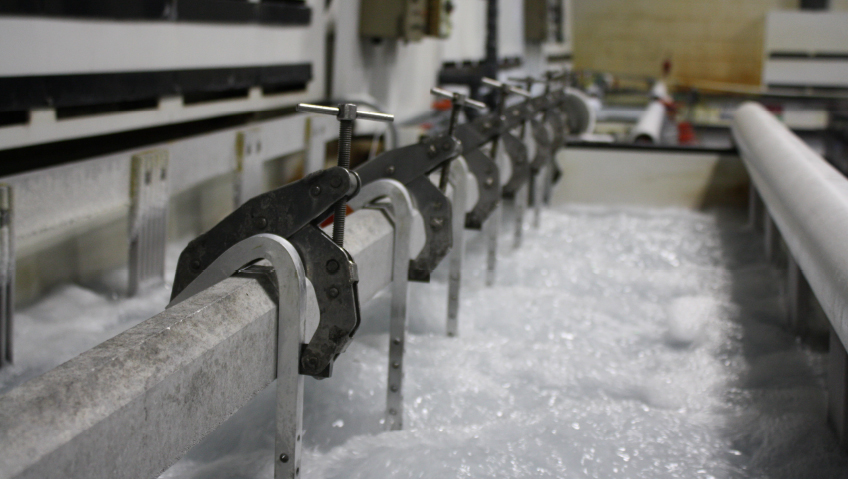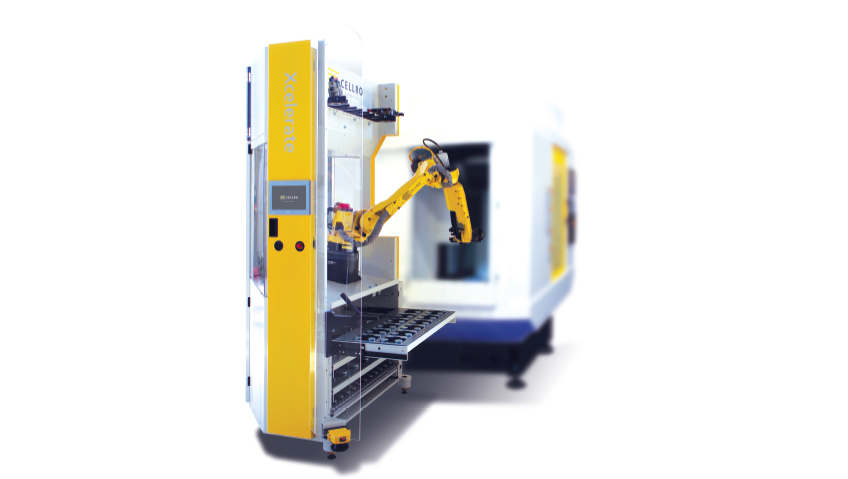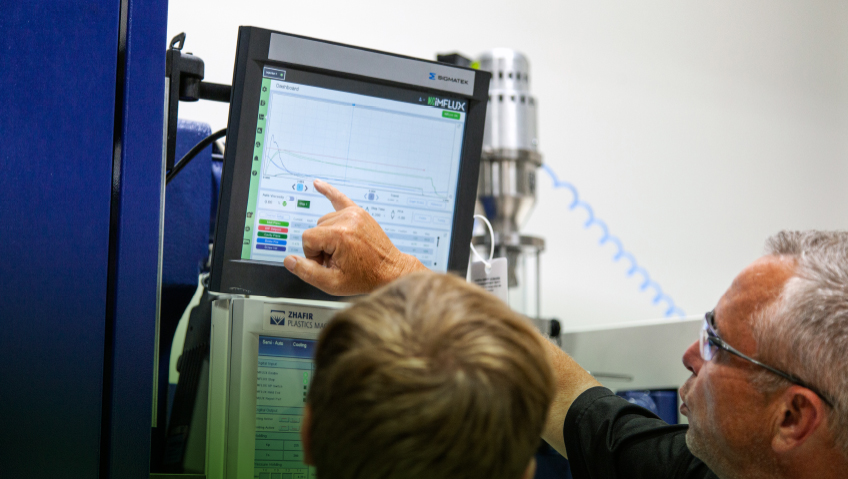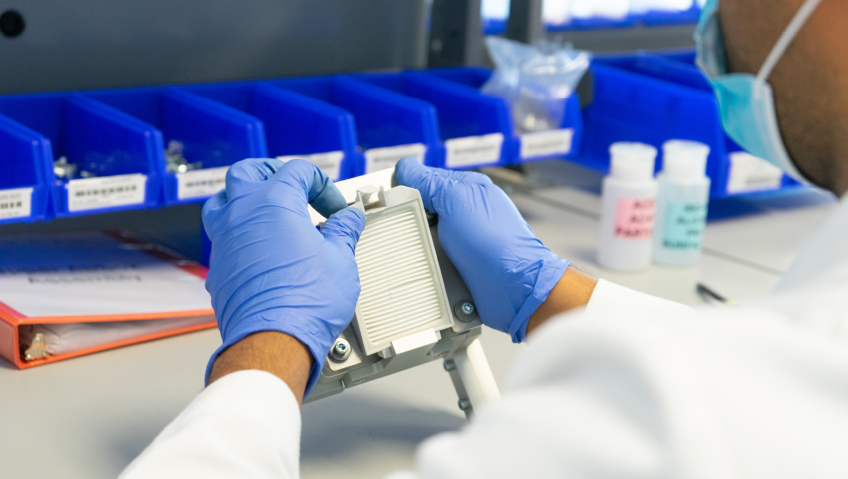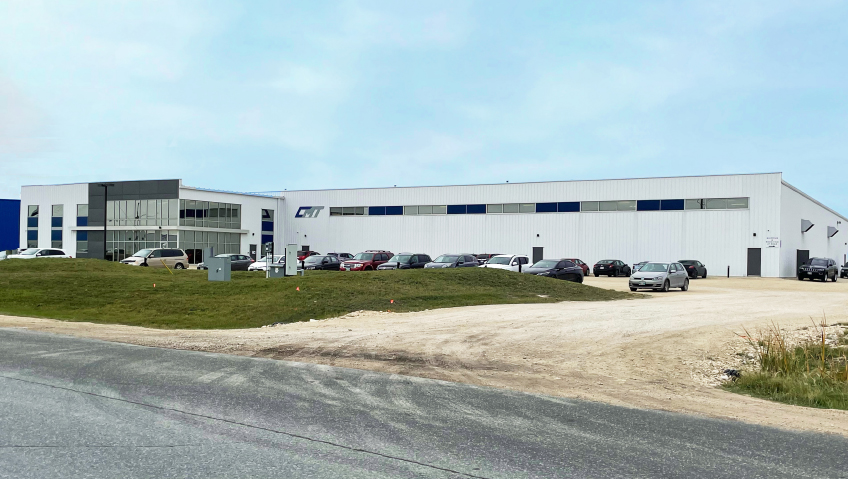The electroplating of beryllium and of magnesium, ultra-lightweight metals used in aerospace components, is a super-specialized process perfected by AOTCO – the Always On Time Company.
That’s not all though. As well as contributing to high-profile missions beyond Earth’s atmosphere for more than 75 years, AOTCO Metal Finishing LLC has also done its bit – and still is – for the safe return to health of countless Americans who have suffered in the grips of the pandemic.
While the rest of the country was shutting down, AOTCO, a designated essential business, was producing parts for national defense and aerospace. Galvanized, its leadership moved quickly to make available a portion of its sophisticated, specialized production capabilities to help with the national emergency response.
The Massachusetts-based company provides specialty metal finishing for many industries, including medical and telecommunications. That means high-precision electroplating, anodizing, multi-material plating and other surface treatments on a broad range of substrates from gold and silver to tin and copper, as well as the sought-after beryllium and magnesium.
Medical manufacturing
During the pandemic, AOTCO, employing its unique skills, has shipped vital parts for 40,000 emergency life-saving ventilators. The team adjusted production to prioritize parts for these essential ventilators, along with hospital bed components, surgical instruments and testing equipment used in diagnosis.
“At that time there weren’t any guidelines from the CDC and we had to figure things out on our own,” says Matthew Smith, President of AOTCO. “So that had a lot of implications, but it was very important to us to try to do something and make a difference.”
If you know anyone who was seriously impacted by contracting the coronavirus, AOTCO may have had a hand in their treatment.
AOTCO used its NADCAP-certified expertise in aerospace, in terms of quality control, adherence to specific temperature and pressure tolerances, and the confines of regulatory and traceability standards, and applied this know-how to assist with the greatest health crisis of our time.
“A big part of what we did was to free up capacity and add shifts to push the parts through. We wanted to get those out there as fast as we could,” Smith says.
Many of its major customers, who are primary defense contractors, also dedicated capacity to making miscellaneous ventilator parts. “The demand was incredible,” he adds, crediting his knowledgeable and experienced team.
Fortunately, the complex processes used in finishing these parts were familiar skills to AOTCO, although a lot of the parts themselves were new. The timing was also fortunate. AOTCO had just received its ISO 13485 medical certification that allowed the company to pivot and provide vital medical components in an expedited fashion. No small feat!
Back to space
As we come out of the pandemic, AOTCO is once again pivoting to fill production gaps in aerospace and defense industry manufacturing. A lot of manufacturing resources across the country were put into fulfilling the medical needs of Americans, and now companies are racing to meet across-the-board demand as manufacturers and suppliers reboot.
For AOTCO, it is all about being agile and responsive (as well as always on time) in meeting the changing demands of its customers. And this has been a staple of the company since it was founded in 1945.
“We work across the board on specialized components from propulsion systems to guidance systems to optical systems,” says Smith.
AOTCO’s parts contributions have been found on space vehicles – from the space shuttle to the International Space Station and the newly deployed Mars landing vehicles. Clients range from agencies to primes to subcontractors.
Mike Nelson, AOTCO Sales Engineer, highlights one influential project for an optical bench that was used to predict a rocket’s exact coordinates while it was leaving the Earth.
The bench had to be made of a very specific metal that was processed in a specific way, “because when the parts are subjected to fluctuations in temperature, those fluctuations have to happen at the same rate as the pieces they are connected to or else it throws off the measurements sent back to mission control,” Nelson says.
“Even the slightest hiccup could result in an inaccurate reading and a failed mission because they won’t know the exact location of the rocket.”
The art of coating
A moving craft, whether it’s a rocket or an airplane, can build up a static charge. AOTCO coats parts in such a way so that high-tech electronic components can function without interference.
“It’s actually nothing fancy, it’s just a lot of coatings applied to one piece,” says Chris Osborn, AOTCO quality control inspector. “By putting multiple applications of chemical nickel on one part and anodizing it, we were able to achieve different outcomes, so the piece is both electrically resistant and conductive.”
Typically, customers come to AOTCO with a specific problem rather than a request for a particular coating. For example, the challenge might be an ongoing electrical short or making a part more robust in a particular hostile environment such as deep ocean water or the icy landforms on the Red Planet.
Every pound launched into space comes with a big cost attached. AOTCO provides the fine, protective coating that allows millions of dollars of technology to get off the ground.
This is where AOTCO has achieved a competitive advantage in certain highly advanced techniques that are extending the capabilities of the aerospace industry. For instance, the company is recognized as a leader in plating malleable, ultra-lightweight beryllium. Beryllium can be stamped or formed into complex shapes with precise tolerances, and can be heat-treated and alloyed with other metals to form a tremendously strong and durable metal that can literally bounce back to its original shape even when under extreme stress or intense heat conditions.
To complement this specialization, AOTCO has now added magnesium plating to its repertoire. Magnesium, like beryllium, is an ultra-lightweight metal – no, the lightest – that can be used as a replacement for aluminum in many applications. Magnesium, 100 percent recyclable, is the lightest of all structural material and has the best strength-to-weight ratio of common castable materials.
At 30 percent lighter than aluminum and 75 percent lighter than steel, magnesium is ideally suited for parts that must withstand the extreme changes in direction that’s found in many aerospace applications.
Magic with magnesium
Joining AOTCO, and bringing this industry specialization, is Lead Engineer Steve Rohrbacher, the former president of Millennium Plating, a top plater of magnesium that closed its doors.
“Now we have two metals that we can process for complex specifications and supply to prime contractors [calling for] the most advanced, lightest metals, essentially things that can solve all their moving problems,” Rohrbacher says.
“We can add more to the payload of each rocket and each delivery to space by reducing the weight. Now we can put the same amount of pounds up, but 30 percent more devices, 30 percent more of the small satellites.” That’s a huge competitive advantage.
AOTCO has set a course for continued growth. The company is bringing in industry experts like Rohrbacher and pairing them with ambitious newcomers to push the frontiers of electroplating.
“We see ourselves as helping to lead innovation and bring this industry into the 21st century, pushing the materials that we can do, while on the quality side introducing database management and modern quality management,” Smith says.
“On the people side, we’re building up the next generation of electroplaters. Our mission is to preserve the art of plating and build the future of it.”

